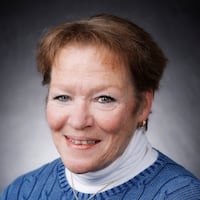“No I’m not excited about the cameras and if they turn me down that’s okay,” Jones said. “Hell I can hardly buy bullets and gas for my police cars and I hardly got enough money to feed my prisoners let alone an added burden that does no good at all.”
He said when there are officer involved shootings in big cities during uprisings “the videos are released that exonerate the police and it doesn’t stop, they still don’t believe it.”
He said there is already transparency on his police force but if they get the money he’ll take it, because he believes at some point in time he may be mandated to do so.
“People say this gives you transparency doesn’t it,” Jones said. “Here’s what I say no, we already have transparency, this gives me I guess triple transparency or quadruple transparency. See here, they still trust the police, they like the police in this community, this county.”
Dwyer told the Journal-News the grant would pay for about 150 cameras and start-up costs for the program. Jones said he would have to hire two employees to maintain the data and handle the program.
The sheriff’s office missed the Oct. 8 grant filing deadline because they were getting some clarifications — there was a one month window to apply — from the state, according to Dwyer, but he said they are still eligible. Bret Crow, communications director for the Ohio Department of Public Safety, said they received and are evaluating 214 applications for the first round of funding including the sheriff’s.
For years Butler County police departments have shied away from body cameras because of the cost and the uncertainty about what needs to be retained as a record, what should or cannot be redacted and other privacy issues.
Gov. Mike DeWine encouraged all police agencies to apply for the grant funding because two-thirds of the state’s police agencies don’t have them.
“Body cameras are beneficial for peace officers and the public because they act as impartial eyes on events as they transpire, but most law enforcement agencies in Ohio don’t have them because they can’t afford them,” DeWine said. “One of my top priorities has always been ensuring that our law enforcement officers have the tools they need to best serve the public, and this new grant program will help eliminate the cost barriers associated with body-worn cameras and will contribute to a safer Ohio.”
A new law took effect in 2019 that gave guidance for using the cameras, it identified 17 instances in which video recorded by body camera is exempt from disclosure. Among them are:
• Inside a residence unless the incident involves “an adversarial encounter with, or a use of force by, a peace officer”
• Showing children
• A death or dead body unless, it was caused by a peace officer
• A nude body, unless the person consents
• “Grievous” bodily harm to a peace officer, firefighter, paramedic or other first responder
The cities of Hamilton and Middletown have also applied for grant money to start new programs. Fairfield, Miami University, Monroe, New Miami, Oxford and Fairfield and West Chester township police departments already have body cameras in the county.
Middletown applied for $185,161 in funding from the state grant, it will include the 78 cameras, software and one records redaction specialist. Like the sheriff, Police Chief Dave Birk said he can’t implement the program without state support. He said he has been “bugging them” for a year and with 50,000 calls for service in 2019 he believes he has a good shot at getting the funding.
“I think just having them is another tool for evidence purposes, for transparency, I think they are a great tool,” Birk told the Journal-News. “I’m kind of excited if we get the grant to start implementing it.”
He said if he gets the money he will be able to sustain the program with various funding sources. The main source is $90,000 they city has been paying annually for the mandated emergency responder radios they purchased. That obligation ends next year.
Hamilton Police Chief Craig Bucheit said he has applied for federal and state grants for the body worn cameras, they have had dash cams for decades. He wouldn’t share the details of the applications. When asked if the city can proceed without the outside funding he said they will have to “cross that bridge” when they come to it.
The state opened the grant opportunity up to all police agencies but departments that do not already have the devises will be given priority. Oxford Police Chief John Jones said he applied for $26,804 worth of funding to upgrade their camera program which was implemented in 2019.
Fairfield Twp. police started wearing the cameras earlier this year, Police Chief Bob Chabali said they ordered 19 cameras for $105,458 but because of a snafu with the order received 25. The annual maintenance cost is $59,400 and his staff and supervisors handle the program themselves, they don’t have a dedicated staffer.
Fairfield has had a camera program for about five years and Police Chief Steve Maynard said he would recommend them to any agency that can afford them, but there are hidden costs. They get many records requests from attorneys and others and those tapes must be redacted according to the law. They have to “store” the videos on a server as public records and all that costs money. He has a part-time person handling the program.
“It’s not something as simple as saying we’re going to get body cameras, you sign a purchase order and the cameras come in and the guys and girls slap them on their uniforms,” Maynard said. “It’s not that simple, there’s definitely a lot to it.”
About the Author

